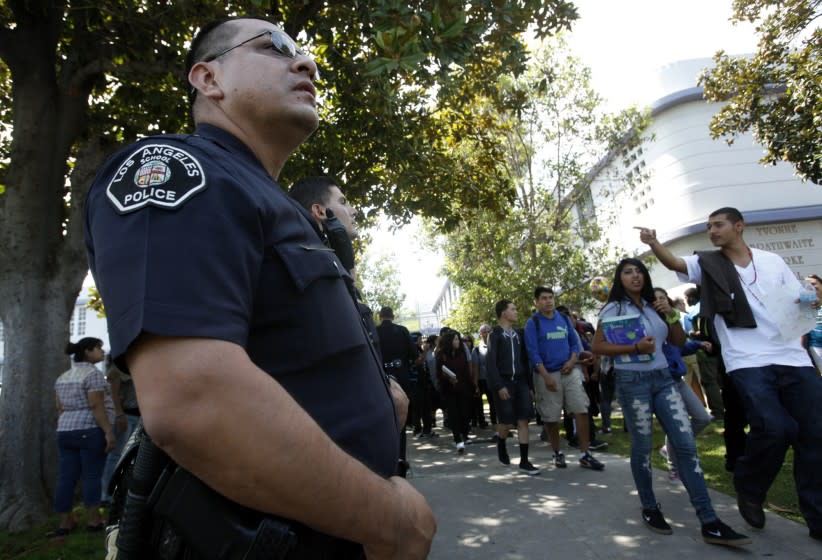Editorial: L.A. Unified just made a misstep on school police

Here’s something the public doesn’t yet know: What’s the best way to keep students safe at Los Angeles schools? How might the use of school police be reformed so that campuses are secure while students aren’t unnerved by the constant presence of a uniformed officer?
Here’s who else doesn’t know: the Los Angeles Unified school board. Yet that didn’t stop it last week from cutting the budget of its police force by more than a third, deciding a key issue without the information it needed to act responsibly.
The vote, made without prior notice to the public, reversed a far more reasonable approach taken just the week before, which would have given an existing task force convened by Supt. Austin Beutner time to analyze the issue and return with informed recommendations.
Instead, the board blindsided Beutner and rashly gave in to the passions of the moment after students, many of them Black, testified about feeling intimidated by the presence of police on campus. This level of student activism is heartening to see, the start of a new generation of civic involvement. Their voices should be taken into account. But that doesn’t mean those voices alone should rule the day. Other students feel safer on campus because of the presence of school police, who are trained specifically to work with young people.
In other words, testimony at a public meeting doesn’t necessarily reflect how the larger population of students and parents feel. At minimum, that would require a survey in which all families can participate. Even then, though family opinions are one important factor, it’s ultimately the board’s responsibility to keep schools safe and determine what level of security is needed to do that.
That could well mean a reduction in, or even the near elimination of, the district’s police force. Some students believe they’re under continual suspicion with an armed, uniformed officer patrolling campus, which should feel like a place where they’re moving toward a brilliant future, not prison. The money saved on officers could be used for additional counselors and other services.
But the board can’t make an informed decision until the task force completes its work. There was no pressing reason to make the cuts now. And with the district already in turmoil as a consequence of the COVID-19 pandemic, this wasn’t the time to add to the disruption.
These are quick-moving times full of fear and hope. That made it all the more important for the school board to both understand the justified concerns of students and hold off on key decisions until they could be based on facts as well as feelings.

